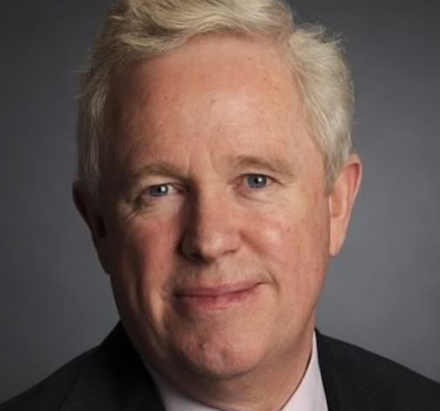
Greg McCormack
The Federal Government’s $20 million forestry plan to plant one billion trees is a big policy step, but is inadequate as it amounts to only two cents per tree. Source: Philip Hopkins for Timberbiz
That was a key point made by the chairman of the Australian Forest Products Association, Greg McCormack, to the DANA forestry conference in Launceston last week.
“This is a good start, but clearly there needs to be other support to meet the target,” Mr McCormack told the conference.
In contrast, New Zealand was spending $240 million on its billion trees policy, which amounted to 24 cents per tree, he said.
Australia’s 20 million tree program managed by Landcare had received $37.6 million so far, which equated to $1.88 per tree.
Australia’s Agricultural Competitiveness White Paper initiatives had also received up to $4 billion, and agriculture received many low-interest loans.
Mr McCormack said NZ used a variety of means to encourage plantations. These included Crown land for planting; joint ventures or leases with landowners such as farmers; incentives for planting through grants; options to scale up some native regeneration projects; and emphasising the role of innovation to enable planting, he said.
NZ had also announced $249 million funding for the 2018 round of the Endeavour R&D Fund, which included forestry R&D.
NZ farmers’ big contribution to NZ’s forestry industry is a model for the Federal Government’s emphasis on farm forestry in its national plan.
Mr McCormack said NZ’s challenges were different from those in Australia. It had a problem with high country – the ridges were too steep for cattle and crops, so the steepest were planted for trees, he said.
NZ still had a lot of top soil, unlike Australia, and was geographically gifted; there were many ports, forestry operations were not far from port, and the industry was geared towards exports.
Mr McCormack said NZ used other instruments. For example at Rotorua, algae blooms in lakes had been created due to strong nutrient loads from farmland and cattle getting in water table. It took 60 years for the nitrogen in the creeks to reach the lakes.
Mr McCormack said local Maoris had aggregated their land and had expanded plantations at no cost to themselves – they just provided the land.
They reduced stocking, put trees on the property and received $2000 a hectare through the sale of nitrogen credits.
“They are now generating new income – more than $1million a year in stumpage, and have satisfied the needs of 30-plus families who aggregated their properties,” he said.
Mr McCormack said in much of the world, farmers provided more wood than in Australia. “Here, it’s mainly state government agencies, so to have more farmers involved is a good thing,” he said.
“We will work closely with farmers to ensure the right trees are in the right places and have the right scale. We have strong ties with the NFF (National Farmers Federation) and strong common goals.”
Mr McCormack said removing the water restrictions in the Emissions Reduction Fund, as both the Government and Opposition had promised, would greatly enhance forestry’s role in fighting climate change.
“Any land with rainfall more than 600 millimetres is ineligible. Our industry relies on regions with 700mm-plus rainfall to produce economic trees, wood of the right quality and species,” he said.
“With the review of the water rule, forestry can take rightful place in carbon markets. Forestry has received the strong endorsement of IPCC as a relative quick way to achieve emissions targets.”
Mr McCormack said the plan’s commitment to the regional forest agreements (RFAs) was critical, even though only 13 per cent of production came from native forests.
“Visit furniture stores and see the amount of overseas furniture in shops disappointing, if you think of the wonderful furniture we have here in forest locked away in national parks,” he said.
Mr McCormack also praised the national plan’s emphasis on regional forestry hubs. Industry had along advocated that plantation investment should concentrate on existing plantation hubs.
“Fibre does not travel easily and processing is better near the fibre resource,” he said. Investments could the include new infrastructure – roads, rail hubs and bridges – integrated industry investments, R&D nodes, communication upgrades, and education, skills and training centres, he said.
“In Australia, we need to be at top of our game, given our big distances and small population,” he said.





